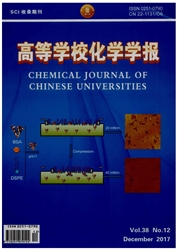

 中文摘要:
中文摘要:
应用ICP—MS分析海水中的痕量元素时,一方面海水中痕量元素的浓度极低(一些常见元素如Co,Cu及Zn等的浓度仅在μg/L量级,而稀土元素的浓度则低达ng/L量级),另一方面海水中存在大量的盐分,特别是高含量的碱金属和碱土金属等还会产生基体效应,造成仪器进样口堵塞等问题.从而对痕量元素的测定产生严重干扰.目前国外主要是通过溶液萃取、共沉淀、或螯合吸附等前处理手段来解决这些问题,而国内在这方面的研究尚不多见.本文简要介绍如何构建和运用离子色谱离线螯合系统结合ICP—MS方法分析海水中的痕量元素.
 英文摘要:
英文摘要:
An off-line chelation system combined with ICP-MS technique was developed for the quantitative determination of trace elements in seawater, namely V, Co, Ni, Cu, Zn, Mo, Cd, Pb, U and rare earth elements(REEs). The system was built based on an ion chromatography equipped with MetPac CC-1 chelation columns which had a strong selective chelation to these target elements within a pH range 5.2-5.6. Acidified seawater samples and NH4Ac(2 mol/L) were blended to meet suitable pH before being injected into the chelation column, thus target elements were retained while alkali and alkaline metals were excluded. Then chelated elements were eluted by HNO3 ( 1 mol/L) and samples were collected for ICP-MS analysis. Varying the ratio of input( gen. 200 mL) to output( gen. 5 mL), the target elements which were concentrated as 40 times as their concentrations were far beyond instrumental quantification limits. At last, a certificated seawater CASS-4 was introduced and our detected values were in good agreement with those certified values.
 同期刊论文项目
同期刊论文项目
 同项目期刊论文
同项目期刊论文
 期刊信息
期刊信息
